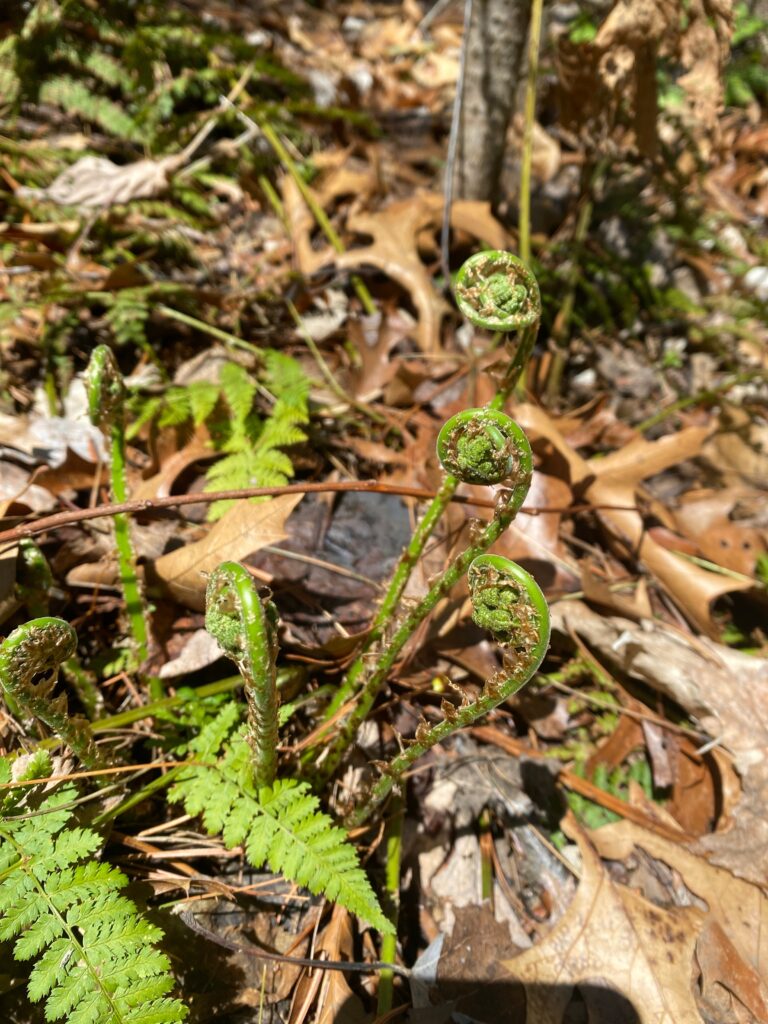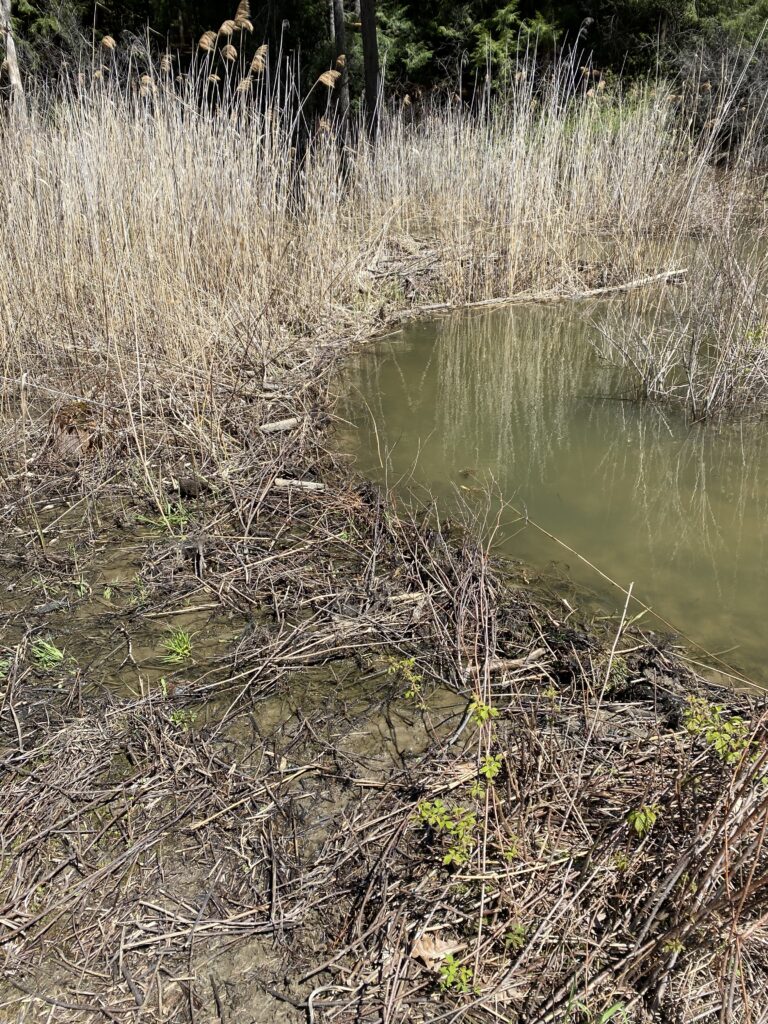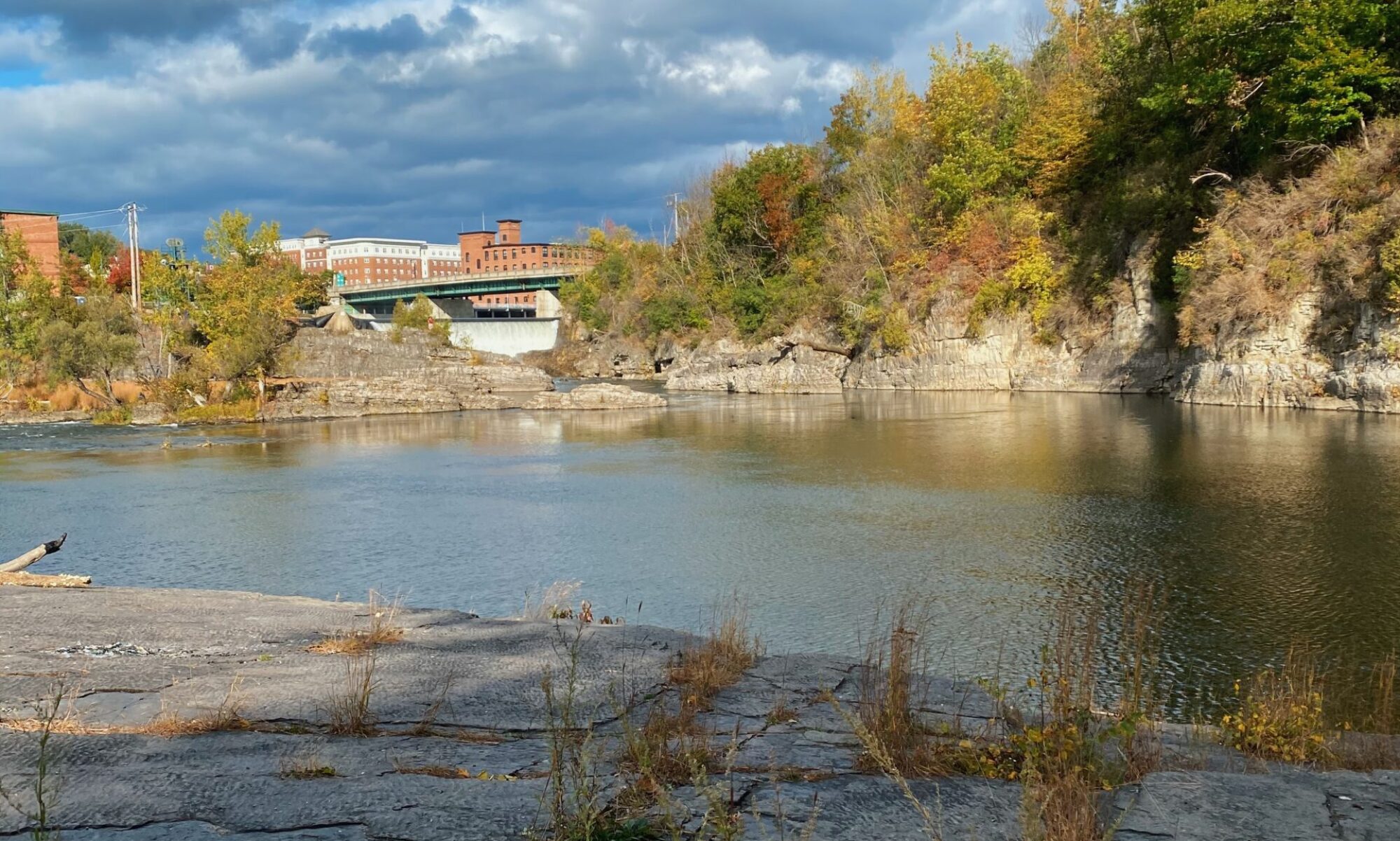This week, cities around the globe are celebrating biodiversity and the wildlife in their locations through the City Nature Challenge. To celebrate the occasion and take part in logging species in Burlington on iNaturalist, I visited Centennial Woods. I am so pleased I had a reason to visit this jewel on UVM’s campus because I often find myself taking this park for granted. On Saturday morning, a few friends and I went out to search for exciting species and enjoy the nature Burlington offers. Teaching my friends about tree and bird identification was a blast and I loved being able to share the knowledge I have gathered over the past year. Some species I saw included Lily of the Valley, a beaver, and a garter snake. Seeing native species like the fiddlehead fern throughout the forest was very exciting, as well. The best part of my excursion was seeing the beaver and the wetlands it had created with its dam. Beavers are one of my favorite animals and seeing the incredible impact one animal can have on the landscape is awe-inspiring.


Learning how to use iNaturalist was super simple and seeing the observations coming in made by my peers throughout the city made the whole affair very exciting. I also really appreciated the feature that lets other people identify plants you post because there were a few I was unsure of. After checking out observations in Burlington, I looked at other cities like Washington D.C. and Cape Town, South Africa, which has an impressive amount of observations and is leading the scoreboard. D.C., which is nearby my hometown in Virginia, had some familiar species like honeysuckle, Eastern Tiger Swallowtail, and Virginia Wildrye. I went through the most commonly logged species and took note of the birds that were listed such as Eastern Bluebird, American Goldfinch, and Carolina Wren. I checked out Cape Town’s page as well to check out the species that were observed in such a different climate. Some of the most fascinating wildlife listed were the Egyptian Goose, Southern Double-collared Sunbird, and the Cape Dwarf Chameleon. Seeing so many individuals go out and explore wild spaces near them brought me a lot of joy. My experience of searching for species, paying attention to the sounds in the forest, and logging my observations was considerably rewarding.
